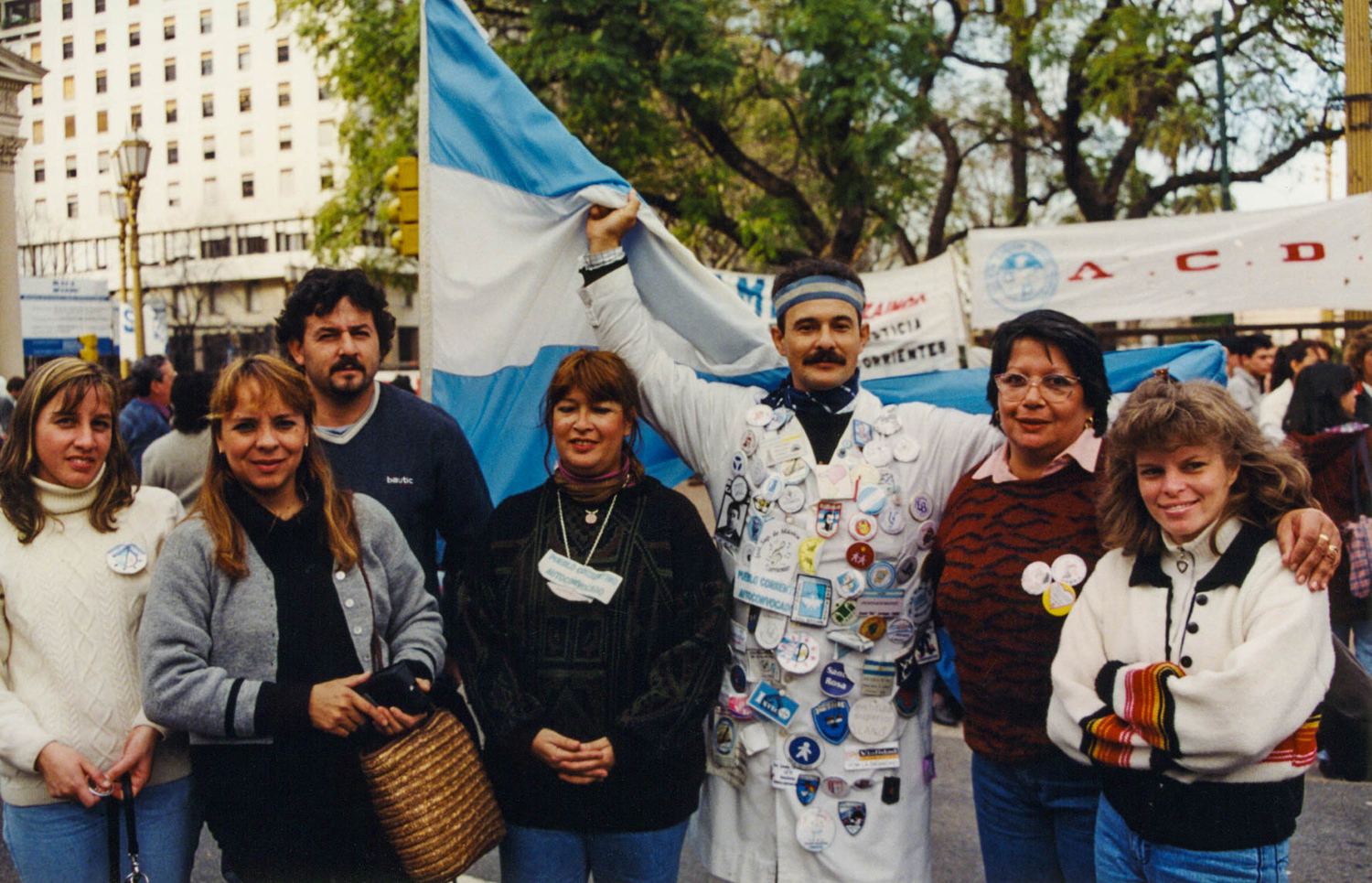Autoconvocados
Autoconvocados (self-organised protestors) from Corrientes province, in Buenos Aires' Plaza de Mayo. Argentina has a rich tradition of autonomous worker movements who eschew formal affiliations with unions or political parties, yet can successfully mount sustained popular protests around shared concerns.
In these protests in 1999, a diverse front of teachers, state employees, farmers, pensioners, healthcare workers, small business owners, transport workers, and the un(der)employed organised months-long demonstrations against government corruption, unpaid wages, and diminishing quality of life in their province. Using tactics such as strikes, roadblocks, escraches (loud demonstrations outside the homes of targeted individuals), and mass marches, they amplified their call for reforms. Six months in, the Corrientes autoconvocados had even brought their protests to the national capital.
Their concerns and protests were an early indicator of the grim politico-economic meltdown that was about to ravage the entire country.
Buenos Aires, Argentina
August 1999
Pentax ZX-M
